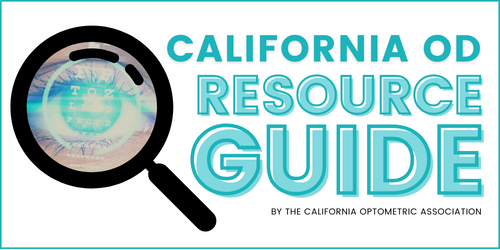Cost of Diabetes in California
By David Ardaya, OD
As California optometrists, we are well aware that a diabetes epidemic is upon us. Diabetes not only costs our great state $24.5 billion(1), it costs our patients their vision and their lives. Approximately 2.3 million Californians are afflicted with diabetes, which is the equivalent of 1 in 12 persons(2).
Upon closer inspection, we find that persons of certain ethnicities are disproportionately affected by diabetes. When broken out, we find that Hispanics' age-adjusted prevalence of diabetes is 10.5 percent(3), which is two times higher than non-Hispanic whites. Additionally, during the 2000s, the Hispanic mortality rate due to diabetes was two times greater than non-Hispanic whites. Considering the growth of the Hispanic community in California and the disproportionate prevalence of diabetes in this population, one would think that the State of California would push to fund diabetic outreach and prevention programs. However, California ranks dead last in the country in spending in this area, averaging a pathetic $.03 per capita(4).
This begs the question, "How can the average doctor of optometry maximize his or her impact in counteracting this epidemic?" The key is with our connection to the greater health care ecosystem. Too long have we been soldiers on the fringe. By partnering and communicating with primary care practitioners, we truly embrace our role as primary eye care providers. One of the greatest opportunities for care coordination revolves around quality of care measures like Star ratings and HEDIS (Healthcare Effectiveness Data and Information Set) scores. Primary care physicians (MDs) are graded on their ability to obtain a consultation letter stating that each of their patients with diabetes has had a diabetic eye care screening. This screening can be a dilated eye examination, fundus photos as described by ETDRS or equivalent imaging. By achieving a high rate of diabetic screenings, the physicians are often incentivized and health care plans and groups achieve high ratings. As the primary eye care provider, we are the loop-closer so this is our opportunity to serve as a valuable resource for the physician and the patient. As soon as we dilate a patient with diabetes, a consultation letter needs to be generated and sent directly to the primary care provider’s office. Some groups, like Kaiser, use imaging in addition to dilated exams to achieve high scores. If a plan has roughly 75 percent of its patients with diabetes screened, that will place the plan very near the top 10 percent nationwide. Many non-closed health plans have diabetic eye screening rates that are lower than 50 percent so this is a unique opportunity to benefit the patient, the primary care physician, the plan, and the optometrist.
Clearly, optometrists have an important role to play in the health care arena. By educating our patients about the effects and causes of diabetes when they are in our offices and educating our local primary care physicians of our capabilities, we can help create the partnerships necessary to slow the tsunami and further integrate our profession to serve our fellow Californians.
Below the infographic you will find an interview conducted by David Ardaya, OD, with Felix Aguilar, MD, MPH, site medical director at AltaMed Health services.
(3).png)
Interview
Dr. Ardaya: Please describe the importance of optometrists in diabetic care.
Dr. Aguilar: "Optometric care is crucial because of the total impact of blindness. The prevention of blindness is an important crusade because once blind, patients with diabetes are more prone to falls, cannot inject insulin and have a greater incidence of depression. Patients lose their means of relating to the world and the lack of independence leads to catastrophic consequences."
Dr. Ardaya: What, in your opinion, are the barriers to patients getting their diabetic eye exam? How can we do better?
Dr. Aguilar:
1) Self-awareness of risk because patients often do not associate eyes with physical health. To combat this we can create outreach programs with medical groups.
2) Transportation, so we try to accommodate dilation on same day or in same location as physical exams, consider working on telemedicine programs.
3) Financial, so we need to keep financial burden at minimum by maximizing usage of insurance and minimizing visits to reduce number of co-pays.
Dr. Ardaya: What information do you want from the optometrist in the consultation letter?
Dr. Aguilar: "The consultation report from the optometrist should contain the diabetic diagnosis code, whether the patient knows their blood sugar measurements, if they know which medications they are taking, and may include a recommendation for tighter blood sugar control based on retinal findings."
Dr. Ardaya: Is there anything you would like optometrists to communicate to the patient at their yearly dilation?
Dr. Aguilar: "Make the connection between blood sugar and vision and explain how regular eye examinations are essential in preventing blindness. Sometimes my patients return and say that the eye doctor told me I need to control my sugar. To me, that is success."
Sources:
1.http://diabetescoalitionofcalifornia.org/diabetes-stats / July, 2015
2.http://www.cdph.ca.gov/programs/cdcb/Documents/FINAL%20Rpt%20(1877)%20DM%20burden%202014_9-04-14MNR3.pdf July, 2015
CHIS study 2011-12
3.https://www.auditor.ca.gov/reports/summary/2014-113 July, 2015
1.png)

1.png)



.png)




.png)
.png)
.png)
.jpg)
.png)
.png)
.png)
.png)
.png)
.png)

.png)

.png)
.png)
